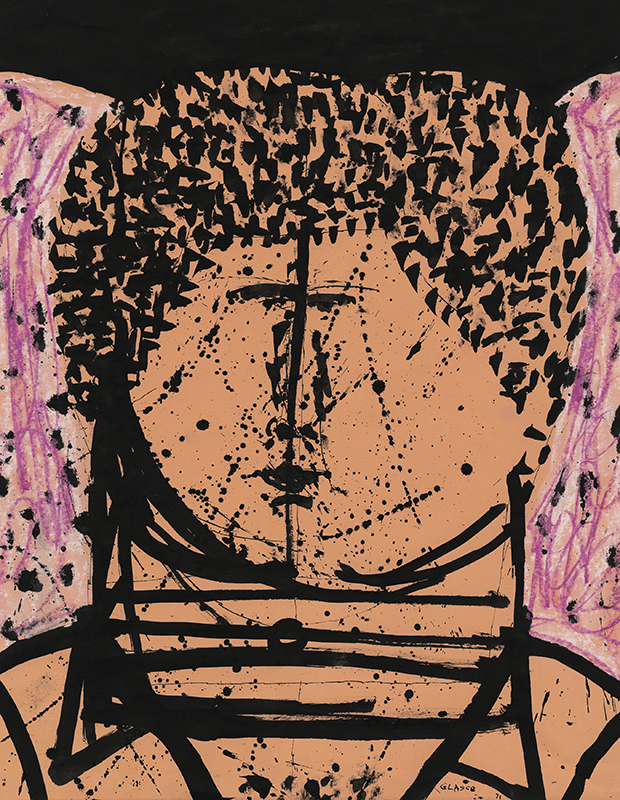
19th, 20th & 21st Century Fine Prints
707-546-7352 · fax 707-546-7924 · web: www.annexgalleries.com · email: artannex@aol.com
(Untitled portrait) by Joseph M. Glasco

(Untitled portrait)
Joseph M. Glasco
(Untitled portrait)
Joseph M. Glasco
1925 - 1996 (biography)This expressive portrait on paper, which features the artist's own fingerprints used as texture in the figure's hair, was originally sold by Catherine Viviano Gallery, 42 East 57th St., New York 22, NY. A note on the art of Glasco from the Butler Institute of American Art states: "Glasco's rythmical, all-over abstract compositions have often been linked with those of American artist Jackson Pollock. During the 1950s, Glasco became friends with Pollock; the two seemed to share an affinity for the element of chance in their work."
Joseph Milton Glasco was born in Pauls Valley, Oklahoma, in 1925. He attended the University of Texas at Austin before enlisting in the U.S. Army with America's entry into World War II, and fought in the Battle of Bulge. With the end of the war he remained in Europe, moving to England and enrolling in the Portsmouth Art School in Bristol. Following this, he traveled to Mexico, where he took courses in painting and sculpture in the San Miguel de Allende School of the Arts before settling in New York City.
Glasco immersed himself in the Abstract Expressionist scene of New York, becoming a part of the creative circles of Jackson Pollock and Alfonso A. Ossorio. In 1949 he held his first one-man exhibit at Perls Galleries and subsequently became the youngest painter to have a piece represented in the Museum of Modern Art. Three years later, the MoMA would include him in their seminal exhibition "Fifteen Americans" which included Jackson Pollock, Mark Rothko, and others. He took courses at the Art Students League under Hans Hoffman and discovered the works of Jean Dubuffet, which would remain an inspiration throughout his career. Despite these early successes, his preference for figurative works as opposed to the purely abstract - which was de rigueur at the moment - made it difficult for critics and dealers to categorize him. Frustrated by the pressure to conform, Glasco left New York for Taos, New Mexico, and then a brief return to Europe.
He then moved to Galveston, Texas and maintained a studio near the Strand Emporium. There, he lived out the rest of his life as a recluse, returning once to New York in 1978 to work on oils in a SoHo loft at the encouragement of his friends. He died in Galveston, Texas, on May 31, 1996.
